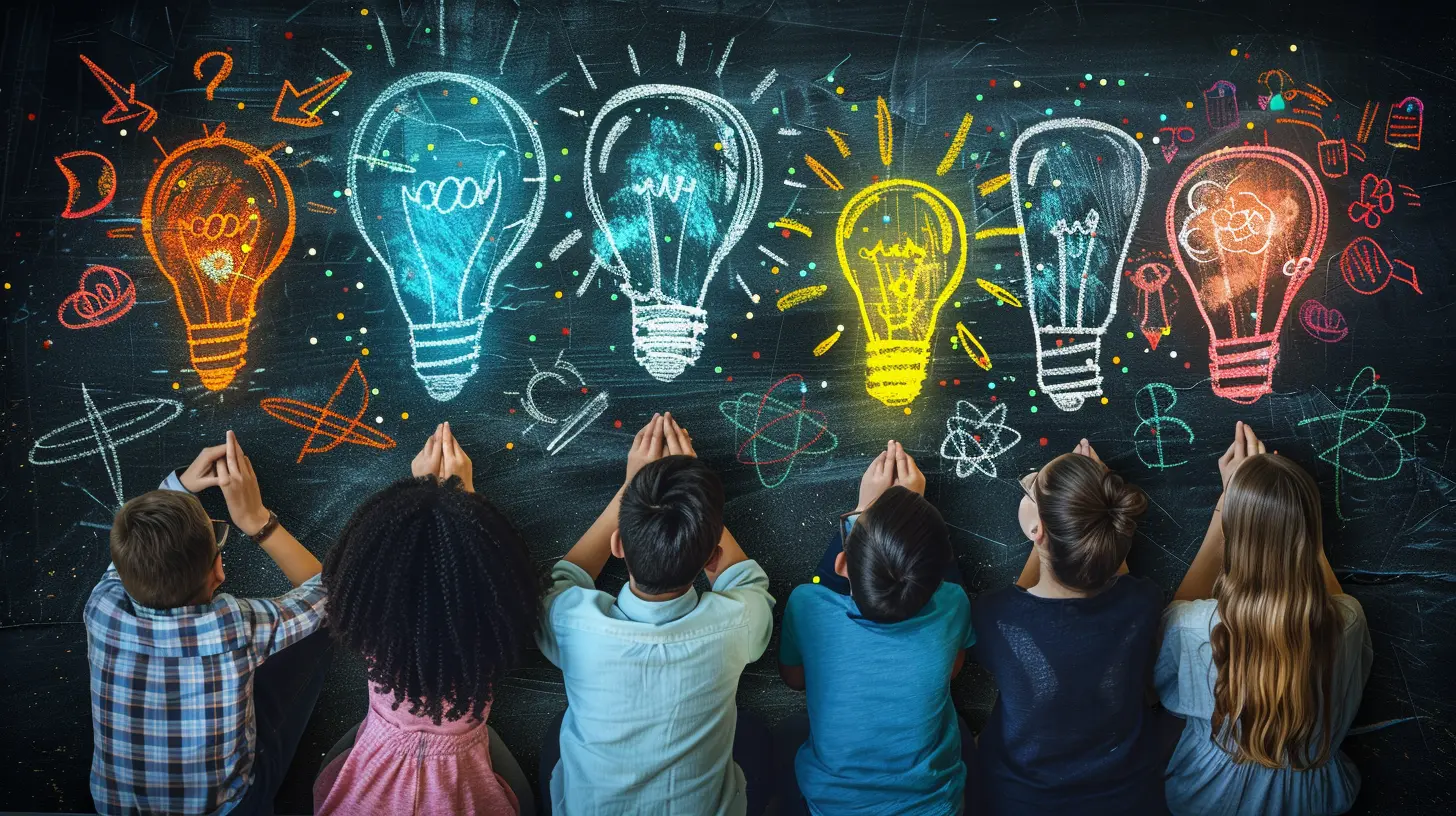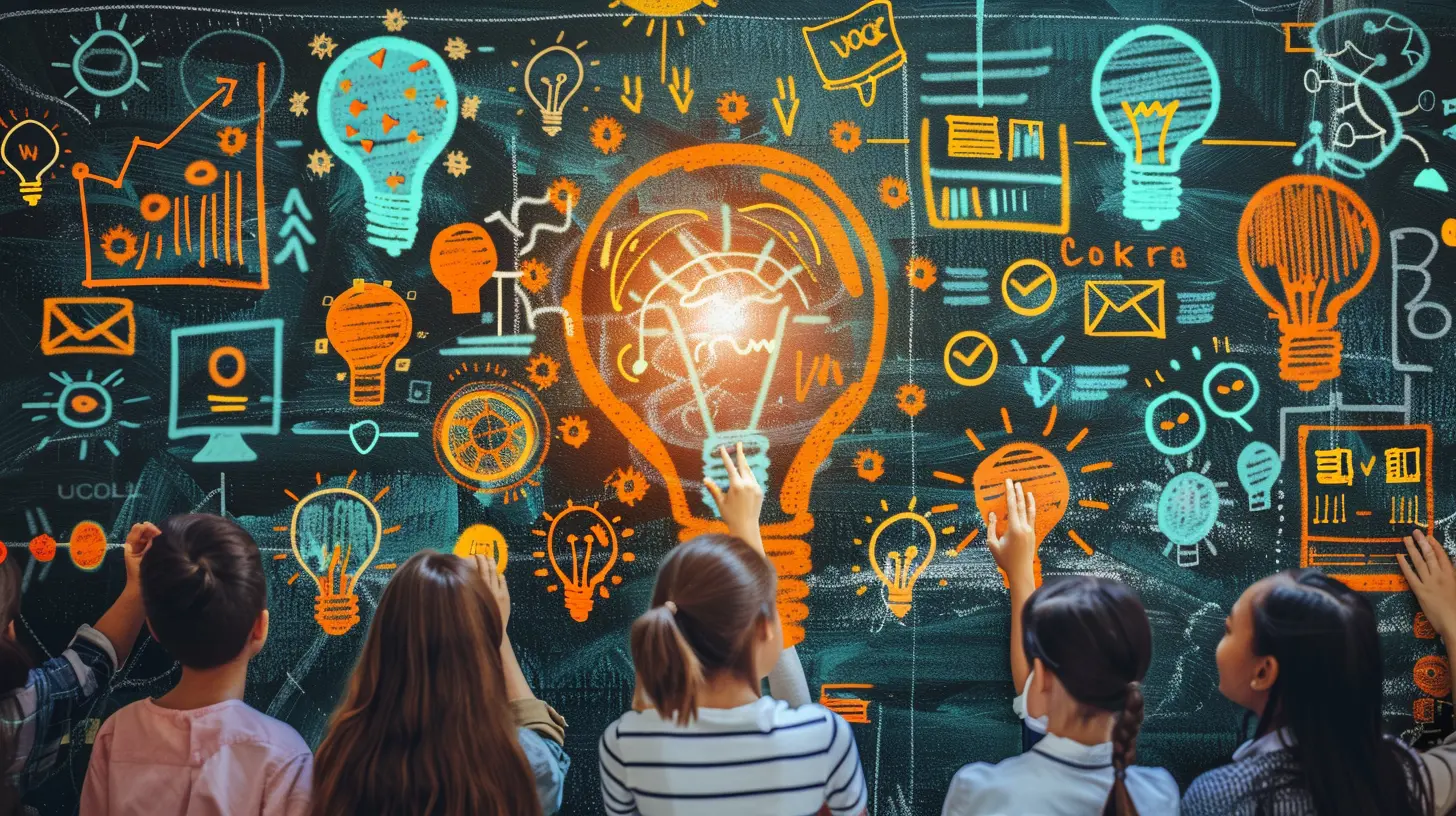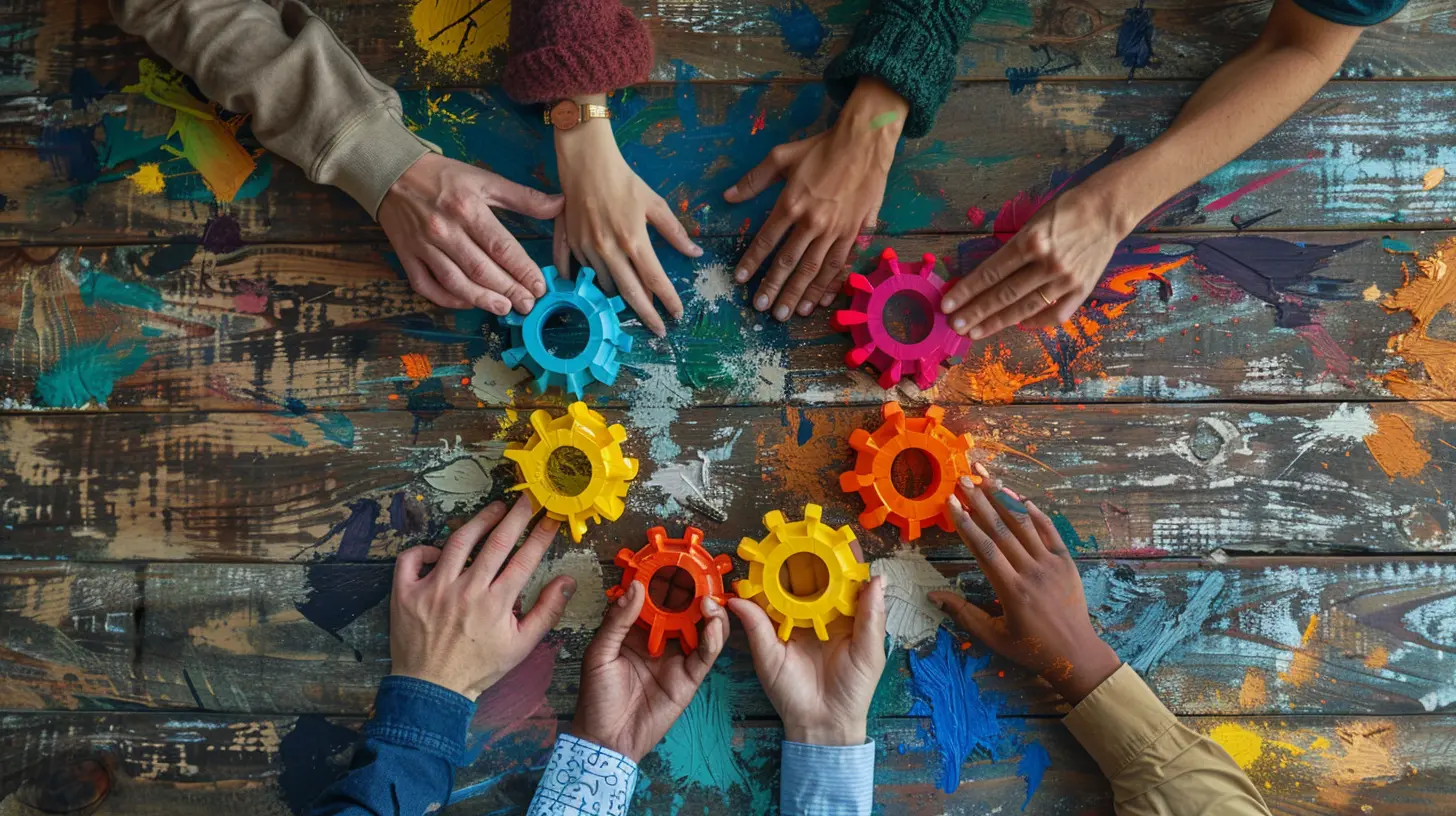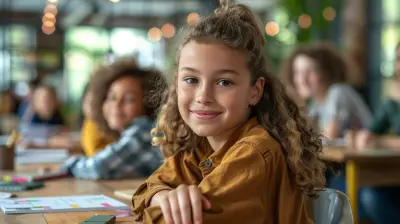Collaborative Decision-Making: Empowering Students to Take Charge
16 September 2025
Let’s be real for a second—when was the last time you let a group of teenagers decide what’s for dinner, let alone what direction a school project should take? Chaos, right? But here’s the kicker: that same chaos, with a little structure (okay, a lot of structure), can actually lead to some of the most powerful learning experiences students can have.
Welcome to the wild world of collaborative decision-making, where students aren't just passive recipients of knowledge—they're decision-makers, influencers, and, dare I say, tiny CEOs of their own academic journeys. It’s time we stop treating kids like future adults and start treating them like present humans with real thoughts, ideas, and the capacity to collaborate (once they put their phones down, of course).

What Is Collaborative Decision-Making (aka Controlled Chaos)?
Collaborative decision-making (CDM, for those of us tired of long words) is the process where a group works together to make choices. Groundbreaking, right? But in the context of education, it’s less about where to eat and more about how learning happens. Think of it like group work on steroids—with power, voice, and responsibility all mixed in. Instead of the teacher saying, “We're doing this today,” it becomes, “Okay team, how should we approach this problem?”Sound risky? It is. But also rewarding. Like investing in crypto, but with fewer panic attacks and more critical thinking.

Why Should We Let Students Decide Anything?
Because, believe it or not, they care. Not about everything—but about a lot more than we give them credit for. Besides, when students are a part of the decision-making process, they’re more likely to:- Actually show up (mentally and emotionally, not just physically).
- Take ownership of their learning.
- Build those ever-elusive “21st-century skills” we keep hearing about.
- Develop empathy by working with others.
- Realize the world doesn’t revolve around their personal preferences (gasp).
Remember the last time someone made a decision for you without asking your opinion? Didn’t feel great, did it? Students feel that way all the time. Giving them a seat at the decision-making table isn’t just respectful—it’s transformative.

The Magic Ingredients of Collaborative Decision-Making
Let’s not pretend this is as simple as tossing a bunch of kids in a room and yelling “Teamwork!” There’s an art and science to it. Here’s what needs to happen for CDM to not turn into Lord of the Flies 2.0.1. Clear Goals (Because “Figure It Out” Isn’t Helpful)
Students need to know what success looks like. Are they designing a project? Solving a social issue? Building a new club? Without a clear purpose, collaboration turns into confusion quicker than you can say “group project.”Set the GPS before handing over the steering wheel.
2. Guidelines, Not Dictatorship
Yes, they need boundaries. Otherwise, you'll end up with a school newspaper that's just memes and horoscopes. Set some non-negotiables, but leave room for creativity.It’s like a coloring book—give the outline, and let them choose the colors (even if they pick neon green for everything).
3. Soft Skills Take Center Stage
Communication, compromise, leadership, time management—basically all the things group projects try (and often fail) to teach. CDM forces students to practice these skills in real-time.Let’s face it, knowing the Pythagorean Theorem won’t help much in a team meeting. Learning to listen without rolling your eyes? Now that’s a life skill.
4. Adults: The Guides, Not the Bosses
Step aside, control freaks. Teachers in CDM aren’t there to micromanage—they’re there to facilitate. That means nudging, questioning, and stepping in only when necessary.Think more Yoda, less Darth Vader. Offer wisdom, but let them swing the lightsaber.

Real-World Applications: Turning Theory Into Tangible Impact
So what does collaborative decision-making actually look like in school? Much cooler than you might think.Student-Led Conferences
Instead of parents hearing from teachers, why not let students present their progress? They curate the work, reflect on growth, and lead the discussion. It’s the ultimate accountability system.You’d be surprised how powerful it is to hear a 13-year-old say, “I didn’t do great on this, but here’s how I’ve improved.”
Project-Based Learning (PBL)
Let students choose their projects, set timelines, and divide tasks. Will it be messy? Oh, absolutely. But the end result? Authentic, meaningful learning experiences that stick with them longer than last week’s TikTok trend.Advisory Boards and Committees
Students helping shape school policies or plan events? Yes. They don’t just want pizza at lunch—they want to talk equity, climate, and student wellness (with pizza on the side). Give them real responsibilities, and you’ll get real results.Conflict Resolution Teams
Instead of sending every playground dispute to the principal, why not train students in peer mediation? They learn conflict resolution, and teachers get a few extra minutes to drink their now-cold coffee. Everyone wins.But Wait—What If It All Falls Apart?
Spoiler alert: it might. Collaborative decision-making isn't a soft pillow of seamless teamwork. Sometimes it's a bumpy ride full of miscommunication, forgotten deadlines, and passive-aggressive group chats.But that’s the point. Failing together is part of the learning. The magic happens when students fall flat, reflect, dust off, and try again. That resilience? You can’t teach it from a textbook.
The “Nope” List: Common Mistakes to Avoid
Let’s save you a few headaches. Here are some CDM landmines to avoid:- Doing it for show. If it’s fake collaboration, students will see right through it. No one wants to be part of a decision-making team that’s really just a decoratively disguised dictatorship.
- Assuming maturity. Newsflash: students are still learning how to be humans. Don’t expect flawless teamwork from the get-go.
- Ignoring diversity. Collaboration should include every voice, not just the loudest ones. Create spaces where all types of learners feel safe to speak.
- Over-orchestrating. Give students room to fail (safely). Don’t manage every minute of the process. They’ll either rise—or crash and learn from it.
Teachers: The Unsung Heroes of Organized Chaos
If you're an educator reading this, you might be thinking, “Great, another thing for me to orchestrate.” And you’re not wrong. CDM can feel like inviting a tornado into your lesson plan. But on the flip side? It’s also where teaching has the biggest impact.You get to witness lightbulb moments, real collaboration, and students turning into leaders before your eyes. And sure, there’ll be eye rolls, awkward silences, and some group members suddenly “sick” on presentation day. But there'll also be growth, energy, and moments of genuine brilliance.
CDM isn’t about perfection. It’s about empowering students to own their learning—failures, flaws, and all.
So, Should You Try Collaborative Decision-Making?
Only if you’re ready to:- Redefine what learning looks like.
- Give up a bit of control (deep breaths).
- Watch students surprise the heck out of you.
Collaborative decision-making isn’t a magic bullet. It’s a messy, beautiful, slightly chaotic way to prepare students for the real world—where collaboration, communication, and compromise are just as important as calculations and commas.
So, next time a student says, “Can we do it this way instead?” don’t shut it down. Lean in. Ask questions. Open the door. You might just find that the best decisions come from the people we least expect—students.
Final Thoughts: Let Them Lead
Collaborative decision-making isn’t just another shiny educational buzzword. It’s a powerful tool to foster ownership, voice, and community. Are students always ready for it? Not at first. But with your guidance, structure, and a sprinkle of patience, they’ll rise to the occasion.Remember: they might not always choose the most efficient path—but they will learn how to walk, stumble, and eventually lead. And that, folks, is the kind of curriculum no standardized test can measure.
all images in this post were generated using AI tools
Category:
CollaborationAuthor:

Bethany Hudson
Discussion
rate this article
1 comments
Jinx McCallum
This article brilliantly highlights the importance of collaborative decision-making in education. Empowering students to take charge fosters critical thinking, enhances teamwork skills, and cultivates a sense of responsibility, ultimately preparing them for future challenges in both academics and life.
October 1, 2025 at 12:20 PM


